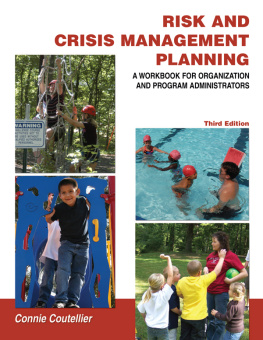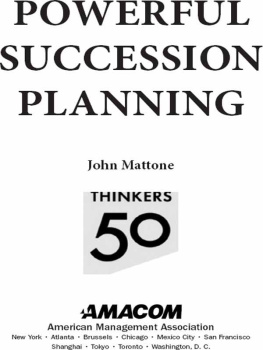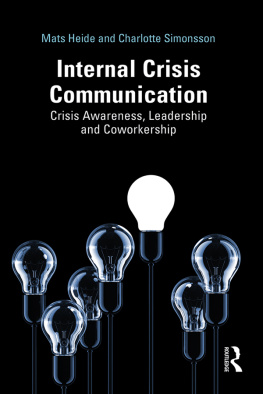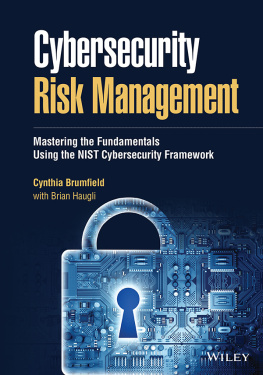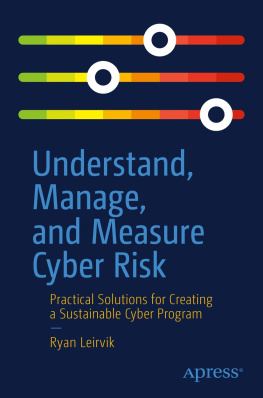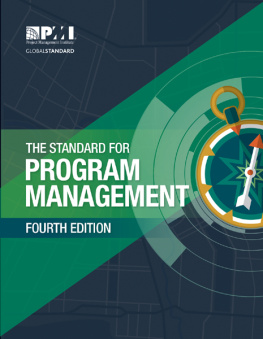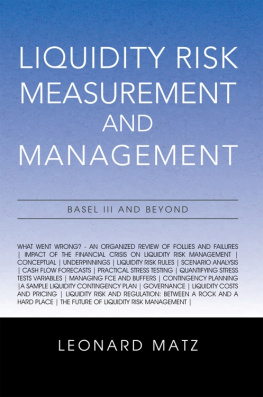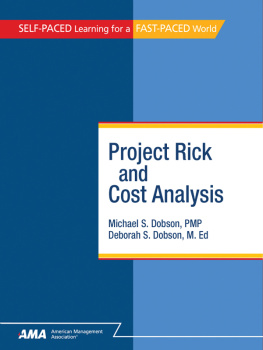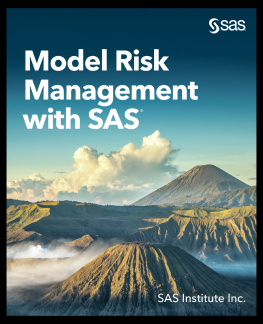Connie Coutellier - Risk and Crisis Management Planning: A Workbook for Organization and Program Administrators
Here you can read online Connie Coutellier - Risk and Crisis Management Planning: A Workbook for Organization and Program Administrators full text of the book (entire story) in english for free. Download pdf and epub, get meaning, cover and reviews about this ebook. year: 2008, publisher: Coaches Choice, genre: Romance novel. Description of the work, (preface) as well as reviews are available. Best literature library LitArk.com created for fans of good reading and offers a wide selection of genres:
Romance novel
Science fiction
Adventure
Detective
Science
History
Home and family
Prose
Art
Politics
Computer
Non-fiction
Religion
Business
Children
Humor
Choose a favorite category and find really read worthwhile books. Enjoy immersion in the world of imagination, feel the emotions of the characters or learn something new for yourself, make an fascinating discovery.
- Book:Risk and Crisis Management Planning: A Workbook for Organization and Program Administrators
- Author:
- Publisher:Coaches Choice
- Genre:
- Year:2008
- Rating:3 / 5
- Favourites:Add to favourites
- Your mark:
- 60
- 1
- 2
- 3
- 4
- 5
Risk and Crisis Management Planning: A Workbook for Organization and Program Administrators: summary, description and annotation
We offer to read an annotation, description, summary or preface (depends on what the author of the book "Risk and Crisis Management Planning: A Workbook for Organization and Program Administrators" wrote himself). If you haven't found the necessary information about the book — write in the comments, we will try to find it.
Connie Coutellier: author's other books
Who wrote Risk and Crisis Management Planning: A Workbook for Organization and Program Administrators? Find out the surname, the name of the author of the book and a list of all author's works by series.
Risk and Crisis Management Planning: A Workbook for Organization and Program Administrators — read online for free the complete book (whole text) full work
Below is the text of the book, divided by pages. System saving the place of the last page read, allows you to conveniently read the book "Risk and Crisis Management Planning: A Workbook for Organization and Program Administrators" online for free, without having to search again every time where you left off. Put a bookmark, and you can go to the page where you finished reading at any time.
Font size:
Interval:
Bookmark:
People lock their front doors, buckle their seat belts, leave a list for the babysitter, carry homeowner and auto insurance, warn their children about talking to strangers, install smoke alarms, keep emergency numbers by the phone, and discuss with their families what to do in case of a tornado or fire. These safety, or risk-management, plans are a part of their everyday routine, and they are almost automatic. They involve only an individual and his immediate family and friends. Therefore, in most cases, people havent written them down. At an organizations main office and at any program site, such as a resident or day camp, special event, childcare center, volunteer training weekend, or group meeting, the health and safety of everyone is in the hands of a team of people. A safety plan should be developed and written down so that everyone on the siteadults and participants alike knows what to do at the proper time and can be sensitive to the situation. This book is all about preventing problems and emergencies, and then handling those that happen anyway. Safety Planning Most organizations believe that group experiences are an extraordinary opportunity to influence the lives of young people. Safety awareness and training have always been a part of most youth agencies group experiences. The current belief and conviction in safety awareness and training is reflected across the country, and in urban, rural, and suburban communities throughout the world. Programs take place at facilities owned and operated by organizations or at schools, churches, community centers, and homes. Most organizations have a set of policies or standards, have licensing requirements, and/or follow the standards set by accrediting bodies. |  |
For example, Camp Fire USA councils, when receiving their charters to conduct programs under the name of Camp Fire USA, are required under the organizations bylaws to operate according to established policies and to maintain certain standards. These policies and standards address the quality of the program and the welfare of children, as well as the total operation of the council. Policies and standards are an integral part of the training and education of boards, staff, volunteers, and youth involved in the operation, as well as in program planning, delivery, and evaluation. Camp Fire USA refers to this risk-management manual as a national guideline to be used when developing council policies and procedures.
Other standards are referred to as the standards of the field and are accepted as the standards of a specific field or industry. In camping, they are the American Camp Association (ACA) standards. In childcare, they are the standards of the National Association for Education of Young Children or state licensing standards. In cases where no set of standards has been identified, an organization may be compared with the practices of similar organizations to determine the accepted standard of care.
Most organizations express a regard for the well-being of children in their safety practices. They are not only concerned with physical and mental health, safety, and sanitation, but also with creating an atmosphere that fosters concern for people. In such an environment, emotional and physical safety is inherent.

Quest for Adventure
Even in a world of high technology, in which computer games, movies, and television provide children with exciting virtual adventures, modern youth and adults still seek real adventure and an element of physical, mental, and emotional challenge in their lives. Organizations address this interest in many of their programs by providing exciting hands-on experiences that teach positive ways to seek adventure in life. These activities provide opportunities to cope with stress and pressure, make important decisions, and experience teamwork and personal achievement.
The objective, therefore, is not to eliminate challenge, but rather to manage it to acceptable levels. This objective is accomplished through risk-management plans that have the utmost forethought and prudence. The true nature of this type of risk is that it is more of a perceived risk than the real thing, or an objective risk. Of course, all programs have both real and perceived risks. A good program administrator understands the difference, magnifies the perceived risk, and does everything to mitigate the objective risk. The goal is to maintain the thrill of adventure, the rush of adrenalin, and the benefits of such activities, while also making them safe, positive experiences. If such adventures are not available to youth, or are not affordable or assessable to the broader population, other less positive and perhaps unlawful behaviors will meet their need for adventure.
How to Use This Book
Because of vast differences in various parts of the country and the uniqueness of each organization, it is impossible to provide a safety or risk-management plan for every situation or activity. This book is a tool to help administrators create a plan that will fit the circumstances of managing their organizations and the sites and programs they provide. Such planning will not guarantee safety and should never be a substitute for legal advice. It will help alleviate the fear and feelings of powerlessness that administrators face when trying to protect their organization by reducing incidents, anticipating risks, and responding appropriately. With the increase in the number of lawsuits and new and more serious social issues such as child abuse, violence, terrorism, and health risks impacting programs, a risk-management plan is essential to help protect the future of any agency.
The worksheets included in the book and on the CD are divided into two main categories: those that address the overall crisis and risk management of the organization and those that address the crisis and risk management of each program. The organizational worksheets in Chapter 5, Organizational Risk-Management Planning, are listed with a number preceded by the letter O. Chapter 6, Program-Risk Management Planning, includes worksheets that are specific to a program or event and are identified with a number preceded by the letter P. When combined, the organizational section and a plan for each program become the overall risk-management plan for the organization. Some worksheets refer to other sections where policies for the organization (O) should be consistent with the ones for any program (P). These sections are cross-referenced or referred to in the rationale or guidelines. The first section of both the organizational worksheets and the program worksheets labeled Crisis Managementrefers to situations in which the information may be needed during a crisis. The organizational worksheets may be completed by the director, office manager, and/or a board task force.
The program worksheets should be completed by the program director or administrator, and be specific to the circumstances of that site or the program for which he is responsible. Some program worksheets may be the same for every program, which means that the program administrators may want to discuss them before beginning this task. The completed worksheets should be current, on the site to which they refer, and accessible to the director/administrator. Some programs, such as a camp or childcare program on a site owned by the organization, may require use of nearly all of the worksheets. Other programs, such as special events or short-term programs, may only use a few.
Next pageFont size:
Interval:
Bookmark:
Similar books «Risk and Crisis Management Planning: A Workbook for Organization and Program Administrators»
Look at similar books to Risk and Crisis Management Planning: A Workbook for Organization and Program Administrators. We have selected literature similar in name and meaning in the hope of providing readers with more options to find new, interesting, not yet read works.
Discussion, reviews of the book Risk and Crisis Management Planning: A Workbook for Organization and Program Administrators and just readers' own opinions. Leave your comments, write what you think about the work, its meaning or the main characters. Specify what exactly you liked and what you didn't like, and why you think so.

